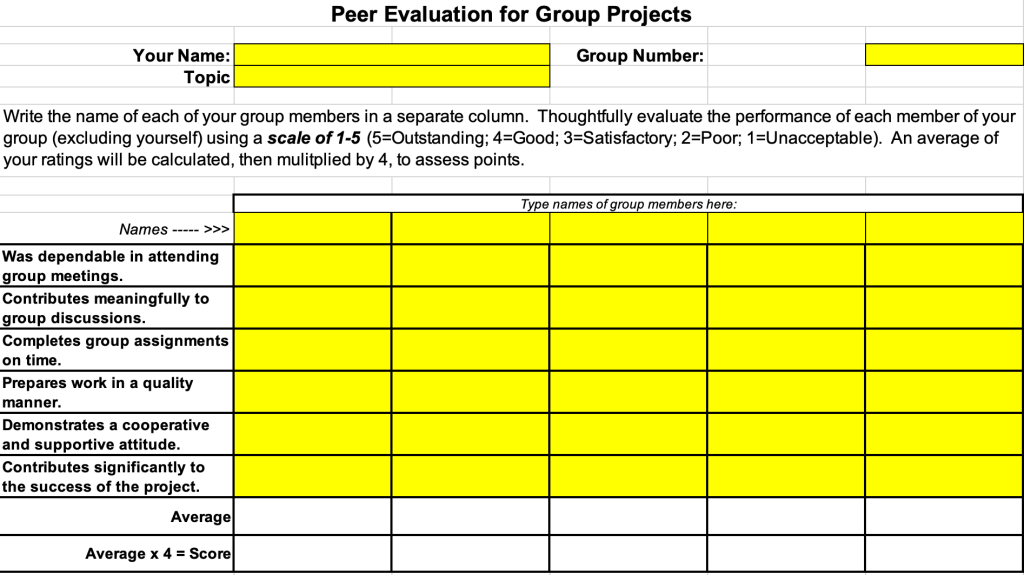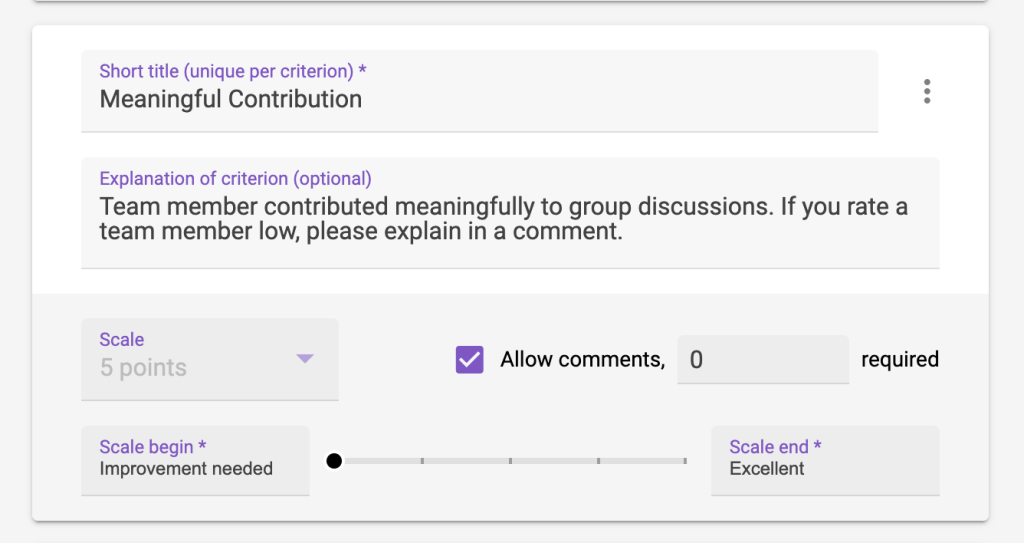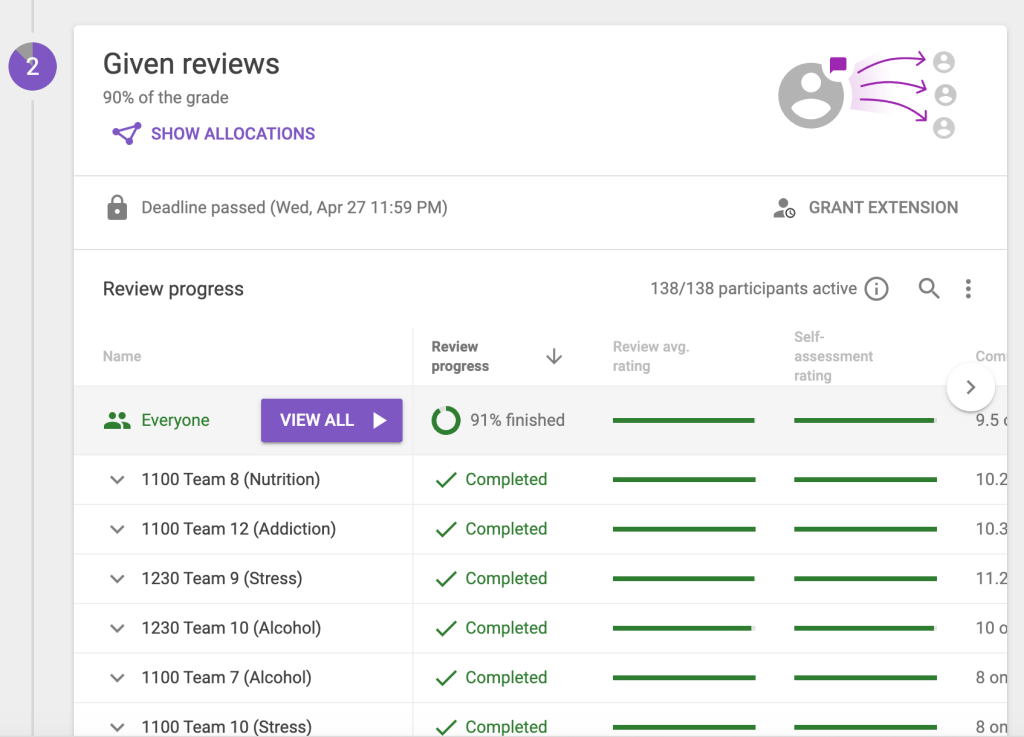Instructional Designer: Jessica Schroeder
Faculty Member: Karyn Stockar
Contents
A Transferable Skill: Working in Groups
The ability to work as a member of a group to solve a problem is an unquestionably essential skill for 21st-century learners. As educators and course designers, we understand the importance of cultivating this particular skill because decades of research “show that employers want college graduates to possess the ability to work in groups and have developed suitable teamwork skills” (Tomcho and Foels, 2012, p. 87). Tomcho and Foels (2012) conducted a meta-analysis of group learning activities and their research revealed that “when students spend time meeting in groups, they are able to achieve deeper learning” (p. 93). According to Tomcho and Foels (2012), “students gain a better understanding of themselves. Group work allows [them] to gain a more accurate picture of how others see them. The feedback that they receive may help them better evaluate their interpersonal behavior” (p. 88).
Although the literature supports how positive collaborative learning is for students, group work often elicits groans from both faculty and students. Faculty that have implemented group-based learning activities have shared common student-related challenges stemming from a lack of clarity in workload contribution and distribution, miscommunication, unclear expectations, and students’ inexperience with collaboration. Tomcho and Foels (2012) offer that these feelings of dissatisfaction with group work “diminish among group members who have received proper instruction about working in groups…[with] realistic expectations of group work” (p. 88). They further suggest that “many students have never worked in a group before or lack the skills to work with others (p. 90). This suggests the importance of faculty access to tools and interventions that help students embrace group work and faculty support structures available for assessing the outcomes of students’ work in groups. With this in mind, how can both student and faculty perspectives be changed related to how they feel about group work? What is available to support faculty in the evaluation of group work that also generates valuable data about group dynamics that presents opportunities to improve them in real time without a lot of extra work?
Group Evaluation as a Practice
Karyn Stockar, a part-time faculty member in the College of Health Sciences, teaches BHAN155 Personal Health Management: An Approach for a Lifetime. In her course, students are tasked with utilizing group problem-solving techniques and online resources to make informed decisions about health and health-related behaviors. The course deliverable is a summative assessment that involves her students working together to research health behavior across multiple dimensions, presenting their findings, and applying what they have learned. As a former consultant at DuPont and current Behavioral Health And Nutrition faculty member, Karyn values the importance of group work to assess student learning and, like many faculty, has struggled with the best way to evaluate her group-based projects.
Karyn’s Group Member Evaluation Process
To gather robust quantitative data about how the groups worked together throughout the project, Karyn developed a learning assessment tool for evaluating the groups using the functionality of Canvas groups paired with a spreadsheet that she developed and uploaded in Canvas. Each student was directed to download a copy of the spreadsheet, fill it out with quantitative data and qualitative data about their experience working in their group, and then submit their file in Canvas.

Once students submitted their feedback about working in their group, Karyn got to work with grading. Each student’s file had to be downloaded, opened, and identified. The feedback they provided (both quantitative and qualitative) was then manually copied from the student file into another spreadsheet where Karyn kept track of the groups in a Peer Evaluation tab. She also collected an in-class audience evaluation score using a polling software and manually imported those scores as well. Then, using the calculations in the spreadsheet, final grades for the assessment were calculated in the spreadsheet and manually entered into Canvas. This only included the quantitative data, however, as qualitative feedback was passed back to the students occasionally through the comment feature in the Canvas assignment.

While Karyn’s workflow successfully generated final grades and feedback for her students; the process was laborious and time-consuming on her part. In addition, students were not guaranteed any qualitative feedback to promote their continuous improvement, and oftentimes had only a numerical score to represent their assessment.
Pandemic Shift
As with us all, emergency remote teaching changed Karyn’s approaches and perspectives. “I think after going through remote learning during the pandemic, creating projects that require and enable collaboration with peers is even more valuable and essential.” As she struggled with emergency remote teaching, she wanted to continue to facilitate her previously developed summative assessment for BHAN155. However, she wanted to find a way to improve the administration of the assessment so that it was less time-intensive to grade and also helped students connect with more qualitative feedback.
A Game-Changing Tool
In their August 2021 Canvas newsletter, the LMS team published an article inviting faculty to participate in a pilot of two new group-based features from an application called FeedbackFruits. It offered both a peer review and a group member evaluation functionality all within the confines of a Canvas assignment and included automatic grade passback to Canvas. After reading through this article and learning about FeedbackFruits’ Group Member Evaluation feature, Karyn volunteered to participate in this pilot. She was excited about FeedbackFruits because it would essentially capture what she was already trying to achieve with her group evaluation process – just in less time.

In addition, she could focus on student qualitative feedback and ensure that all students received not only quantitative but qualitative feedback. She started using the tool and quickly realized the time savings and the benefits to her students. With FeedbackFruits, Karyn only needed to set up her Canvas Groups, create her Canvas assignment, and enable FeedbackFruits as the external tool in the assignment. She imported her rubric criteria, set her deadlines, and the work on her end was complete. Students interacted with the tool on their own, and any feedback they provided was given directly back to them without Karyn processing spreadsheets. In fact, Karyn shared that “with Feedback Fruits, what used to take the equivalent of a weekend’s worth of time each semester now takes about an hour. It provides extra value in that the tool provides my students with direct feedback from their teammates, which facilitates their personal growth and development.” What she mentioned appreciating the most about FeedbackFruits is that “students can see all of the feedback…having the actual feedback in words is so much more valuable than seeing a score in each area of the evaluation tool.”

FeedbackFruits is a fully licensed application at the University of Delaware and is available for all UD faculty to use in any Canvas assignment. The two tools available are Group Member Evaluation (to evaluate the skills of group members) and Peer Review (to evaluate the artifacts of a peer).
For more information, contact Jessica Schroeder at jlsd@udel.edu, peruse the ATS FeedbackFruits webpage, or register for one of our FeedbackFruits Workshops.
References
Blowers, D.F. (2000). Canada: The Story of Prior Learning Assessment and Recognition.In N. Evan’s (Ed) Experiential Learning Around the World: Employability and the Global Economy (pp 83- 102). London, England: Jessica Kingsley Publications.
Huang, L. (2018, September). Students Riding on Coattails during Group Work? Five Simple Ideas to Try. Faculty Focus. Retrieved from https://www.facultyfocus.com/articles/effective-teaching-strategies/students-riding-coattails-group-work-five-simple-ideas-try/
Tomcho, T. J., & Foels, R. (2012). Meta-Analysis of Group Learning Activities: Empirically Based Teaching Recommendations. Teaching of Psychology, 39(3), 159–169. https://doi.org/10.1177/0098628312450414
